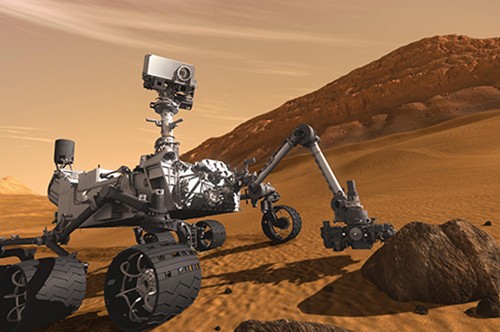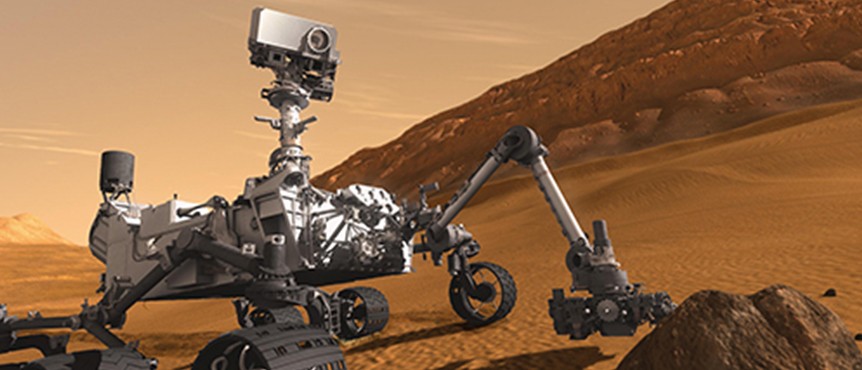Pietro Lapiana or Eurolink Systems explains the multitude of applications for unmanned vehicles and how they are changing our lives.


For a number of years now, technology has had a shocking effect on our everyday lives, creating a global community with its own rules and regulations, which in many aspects are new and different. The computing power available to any of our smartphones today is greater than that on board the Mars rovers and the Lunar probes. This information should spark a reflection: apps are everywhere but also affect society in terms of the way we communicate. Phone calls, for example, are increasingly replaced by instant messaging; a single spoken discussion is replaced by multiple, concurrent ones.
Similarly robots, which took the first steps in the industrial environment, are being employed in fields we never believed possible even just 10 years ago. A robot cleaning our house or mowing our lawn is familiarizing the concept of a “robotic friend”, similarly to the way in which appliances affected our parents’ and grandparents’ lives in the 1960s.
First created to support military operations at sea, over ground and in air, “drones” are today also known as “unmanned vehicles”, and widely employed in hundreds of possible variations in military and civil applications. The philosophy behind the use of drones is to replace humans with unmanned systems in all “Dangerous, Dull and Dirty” operations.
Today, mini-unmanned systems (of less than 10 kg for aerial models and less than 20 kg for ground models) are successfully employed in precision agriculture, surveillance, building maintenance, wind and photovoltaic survey, artistic and architectural heritage protection, aerial filming and many other applications.
There has been an explosion in the supply of unmanned systems in the last three years, since they seemingly offer a smarter way to satisfy usual needs. There is therefore a huge potential market to be addressed as fast as regulations can be put in place to cover the possible applications.
Without diverging too far, take into consideration self-driving cars, which are gradually gaining ground in car pooling and car sharing. One year ago, during the Italy Expo 2015 ArteQ conference, I had a “vision”, picturing an Uber-like app organizing self-driving cars for transportation within the city. Indeed, alongside autonomous driving features, infotainment is also evolving to meet the needs of the driver, who is increasingly becoming more of a passenger. There is great potential in reducing the number of circulating vehicles while increasing safety for passengers. Just in July 2016, Uber and Volvo planned to release 100 Volvo Xc90 hybrids to test the Uber+ autonomous vehicle in Pennsylvania over the next few months. It may seem risky, but how often do we doubt the safety of autopilots on planes and subway trains anymore? As soon as regulation is able to catch up with technology, we may welcome unmanned boats for long trans-oceanic freight navigation. Whilst our children need a driving license and a car to get around, our grandchildren may not need a car at all.
Our company, Eurolink Systems, was established in 1993 and is an ISO9001:2008 and T.U.L.P.S qualified Company. Since its foundation, Eurolink Systems has been focused on the design and manufacture of mission-critical electronics systems. We pioneered remotely controlled systems in 2009 when nobody had considered employing unmanned systems in Italy, with the exception of military applications. In 2011, we had the honor of using one of our drone systems for the live aerial HD broadcasting of the 197th Anniversary of the foundation of the Italian Carabinieri Corps.
Since then, we have developed many platforms, both ground and aerial, including a cabled aerial platform with the flexibility of a Vertical Take Off and Landing (VTOL) system and the endurance capability of fixed-wing aircrafts. Other platforms we developed include a small-sized tilt rotor-aircraft developed for a “Lazio Innova” program, and a robot swarm experiment for cooperating systems.
Our robot swarm experiment demonstrated the feasibility of a robotic swarm able to autonomously develop a strategy to accomplish a mission, sharing information and reacting to potential challenges such as one or more unit failures. This is a step towards a system acting autonomously on behalf of a human without risking the rescuers’ own safety. We can further apply these systems in disaster recovery operations, in the presence of chemical or radioactive leaks, for example, safeguarding nature and human life alike during the operation. The command system in our swarm demonstration was also portable, allowing the possibility for any human personnel to remain at a safe distance while the reconnaissance swarm gathers information. Specific applications include civil protection programs and interventions.
Eurolink Systems is currently working on a program presented at this year’s DronItaly, developing the Lazio government’s “Territorial Security and Surveillance System” (S3T). This is an IoT-based platform that allows a network of heterogeneous unmanned sensors and robots to monitor pollution through data acquisition, analysis and dissemination.
The system will facilitate the prediction of pollution impact on coasts and coastal cities, gathering and analyzing wind, tidal information and sources of pollution. The system will simultaneously provide the regional and national environmental Agencies (ARPA and ISPRA) with the information needed to manage and control the effects of pollution, enabling them to put targeted countermeasures in place.
The next challenge we are facing is the “algorithm ecosystem” concerning all the sensors, actuators and processing power available now and over the next few years. The core challenge will be data fusion and harmonization from different sensors and to different actuators, and the “rules” or algorithms that will process the required work in real-time. Systems based on auto-learning and neural architectures will improve dramatically to drive this revolution, also influencing smart or digital cities where cars, robots and humans will share a common ecosystem.

For a number of years now, technology has had a shocking effect on our everyday lives, creating a global community with its own rules and regulations, which in many aspects are new and different. The computing power available to any of our smartphones today is greater than that on board the Mars rovers and the Lunar probes. This information should spark a reflection: apps are everywhere but also affect society in terms of the way we communicate. Phone calls, for example, are increasingly replaced by instant messaging; a single spoken discussion is replaced by multiple, concurrent ones.
Similarly robots, which took the first steps in the industrial environment, are being employed in fields we never believed possible even just 10 years ago. A robot cleaning our house or mowing our lawn is familiarizing the concept of a “robotic friend”, similarly to the way in which appliances affected our parents’ and grandparents’ lives in the 1960s.
First created to support military operations at sea, over ground and in air, “drones” are today also known as “unmanned vehicles”, and widely employed in hundreds of possible variations in military and civil applications. The philosophy behind the use of drones is to replace humans with unmanned systems in all “Dangerous, Dull and Dirty” operations.
Today, mini-unmanned systems (of less than 10 kg for aerial models and less than 20 kg for ground models) are successfully employed in precision agriculture, surveillance, building maintenance, wind and photovoltaic survey, artistic and architectural heritage protection, aerial filming and many other applications.
There has been an explosion in the supply of unmanned systems in the last three years, since they seemingly offer a smarter way to satisfy usual needs. There is therefore a huge potential market to be addressed as fast as regulations can be put in place to cover the possible applications.
Without diverging too far, take into consideration self-driving cars, which are gradually gaining ground in car pooling and car sharing. One year ago, during the Italy Expo 2015 ArteQ conference, I had a “vision”, picturing an Uber-like app organizing self-driving cars for transportation within the city. Indeed, alongside autonomous driving features, infotainment is also evolving to meet the needs of the driver, who is increasingly becoming more of a passenger. There is great potential in reducing the number of circulating vehicles while increasing safety for passengers. Just in July 2016, Uber and Volvo planned to release 100 Volvo Xc90 hybrids to test the Uber+ autonomous vehicle in Pennsylvania over the next few months. It may seem risky, but how often do we doubt the safety of autopilots on planes and subway trains anymore? As soon as regulation is able to catch up with technology, we may welcome unmanned boats for long trans-oceanic freight navigation. Whilst our children need a driving license and a car to get around, our grandchildren may not need a car at all.
Our company, Eurolink Systems, was established in 1993 and is an ISO9001:2008 and T.U.L.P.S qualified Company. Since its foundation, Eurolink Systems has been focused on the design and manufacture of mission-critical electronics systems. We pioneered remotely controlled systems in 2009 when nobody had considered employing unmanned systems in Italy, with the exception of military applications. In 2011, we had the honor of using one of our drone systems for the live aerial HD broadcasting of the 197th Anniversary of the foundation of the Italian Carabinieri Corps.
Since then, we have developed many platforms, both ground and aerial, including a cabled aerial platform with the flexibility of a Vertical Take Off and Landing (VTOL) system and the endurance capability of fixed-wing aircrafts. Other platforms we developed include a small-sized tilt rotor-aircraft developed for a “Lazio Innova” program, and a robot swarm experiment for cooperating systems.
Our robot swarm experiment demonstrated the feasibility of a robotic swarm able to autonomously develop a strategy to accomplish a mission, sharing information and reacting to potential challenges such as one or more unit failures. This is a step towards a system acting autonomously on behalf of a human without risking the rescuers’ own safety. We can further apply these systems in disaster recovery operations, in the presence of chemical or radioactive leaks, for example, safeguarding nature and human life alike during the operation. The command system in our swarm demonstration was also portable, allowing the possibility for any human personnel to remain at a safe distance while the reconnaissance swarm gathers information. Specific applications include civil protection programs and interventions.
Eurolink Systems is currently working on a program presented at this year’s DronItaly, developing the Lazio government’s “Territorial Security and Surveillance System” (S3T). This is an IoT-based platform that allows a network of heterogeneous unmanned sensors and robots to monitor pollution through data acquisition, analysis and dissemination.
The system will facilitate the prediction of pollution impact on coasts and coastal cities, gathering and analyzing wind, tidal information and sources of pollution. The system will simultaneously provide the regional and national environmental Agencies (ARPA and ISPRA) with the information needed to manage and control the effects of pollution, enabling them to put targeted countermeasures in place.
The next challenge we are facing is the “algorithm ecosystem” concerning all the sensors, actuators and processing power available now and over the next few years. The core challenge will be data fusion and harmonization from different sensors and to different actuators, and the “rules” or algorithms that will process the required work in real-time. Systems based on auto-learning and neural architectures will improve dramatically to drive this revolution, also influencing smart or digital cities where cars, robots and humans will share a common ecosystem.